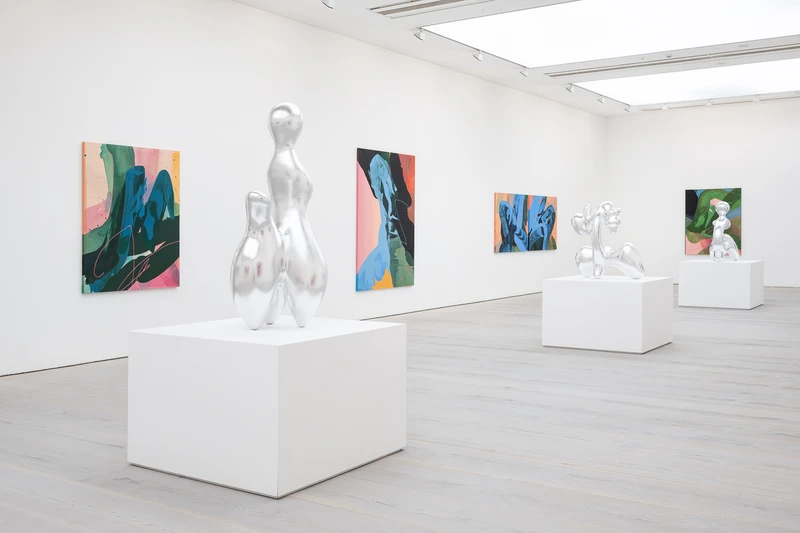Kathryn MacNaughton & Misha Milovanovich: Moving Parts at Saatchi Gallery
15 Nov 2023-7 Jan 2024
PV 15 Nov 2023, 6.30-8.30pm


BEERS London returns to Saatchi Gallery for Moving Parts, an exhibition that pairs the vibrant work of Canadian painter Kathryn MacNaughton with the playful sculptures of Serbian artist Misha Milovanovich, who are exhibiting together for the first time. The exhibition is envisioned to explore the means in which these two artists consider the figure in relation to a larger space, and how identity is shaped and understood through a cultural context and contemporary art.
Kathryn MacNaughton’s newest work is a departure for her, moving away from her more literal figurative ornamentation to tap into conscious and unconscious movement. Here, MacNaughton has almost completely abandoned the conventions of her previous work, and this new series of bold, colour-field paintings function almost like automatic writing, where the artist allows the gestural and intuitive to operate where, previously, she may have restricted herself through structure or form. The paintings are dynamic, emotive, and powerful – reminiscent of Katarina Grosse or Helen Frankenthaler. And, for MacNaughton, both a more immediate and emotive approach to image making.
Exhibiting for the first time with MacNaughton is Misha Milovanovich, who utilizes the conventions of ‘symphonic abstraction’ – similar to that of Kandinsky or Miró – to visualize how structure and spontaneity might coalesce into new, unique forms of expression. Her free-form, totemic sculptures are based on both primitive and Modernist aesthetics that question and challenge our understanding of control and chaos. Milovanovich’s sculptures for this particular exhibition are an exciting departure from her more typical and unexpected colour combinations seen in previous works. They can also be seen as an interpretation of her response to new cultural spaces, having moved to the UK from Serbia as a teenager. The artist’s playful, beguiling and off-kilter works respond to the organic forms as well as the gestural compositions found in MacNaughton’s work.
Together, these two artists ask us to question how movement responds to our sense of self; how we interpret colour, shape, and the relationship between paintings and sculptures as playful, emotionally charged, or even spiritual.